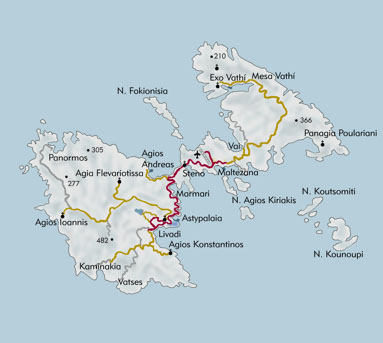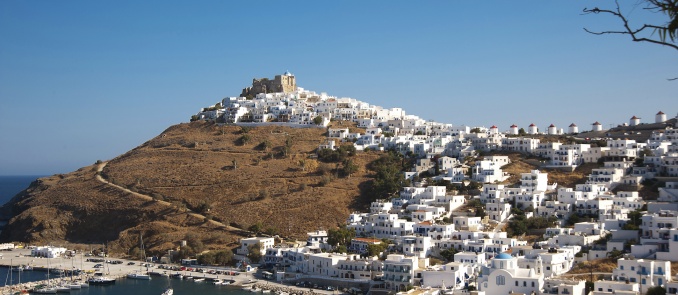Astipalaia: Welcome to the butterfly-shaped island of the Aegean
Astipalaia or Astropalia - as the locals name it - indeed resembles to a butterfly if you look at its shape on the map or when flying above it. The island’s two “wings”, in effect its two islands, are only connected with a thin stripe of land and the sea gloriously engulfs it.
 We first see records of the island’s name in mythology and according to certain myths, Astipalaia and Europe were the daughters of Finikos and Perimidis. The island was initially inhabited in the Prehistoric Era by various tribes, such as the Kares who called the island Pirra, as well as the Minoites, to mention just a few.
We first see records of the island’s name in mythology and according to certain myths, Astipalaia and Europe were the daughters of Finikos and Perimidis. The island was initially inhabited in the Prehistoric Era by various tribes, such as the Kares who called the island Pirra, as well as the Minoites, to mention just a few.
During the Hellenistic Era, the island of Astipalaia was the main port of the Egyptian Ptolemeas and it maintained an important marine activity due to fishing and agriculture, which both flourished on the island. In the duration of the Roman Era, the ports of the island were used as battle bases against the pirates, while during the Byzantine Era the invasions of the pirates managed to completely alter the island’s settlements layout when inhabitants moved towards the inner parts leaving the shores uninhabited and this is also when castles were constructed for protection. In the modern times and in 1204 to be exact, the island was acquired by the Venetians and the Quirini family in particular, who stayed there until 1537 when the island was conquered by the Turks. Like all the other islands of the Dodecanese complex, it remained under Turkish occupation until 1902 and then it was occupied by the Italians, the Germans and the Brits before it finally becomes part of Greek territory in 1948.

In visiting the island of Astipalaia you will realize that It remains a unique, authentic island through the passing of time. It does not follow trends, but is a definite advocate of aesthetics and culture. To make your stay an absolutely unforgettable one, select to make accommodation arrangements at either Melograno Villas or Fildisi Boutique Hotel.



